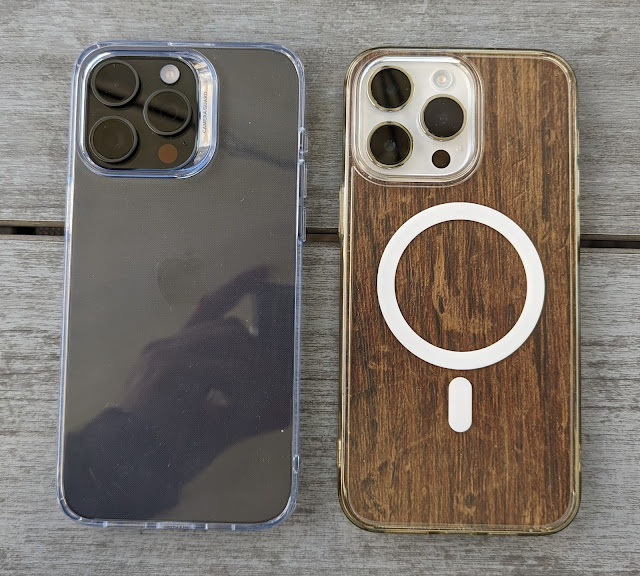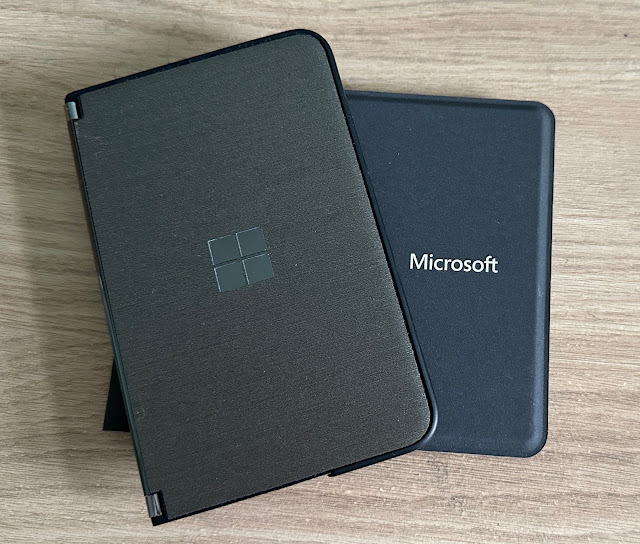Some backward steps in the iPhone 14 Pro Max
[Updated with a few new data points and musings, 20 Sep 2022]
Now, I know you're going to think I'm being a little contrary - and I possibly am. But as someone who's been saving their pennies for the 256GB iPhone 14 Pro Max for a year or so (to replace my existing 12 Pro Max), I've been underwhelmed by some of the things Apple has done for this generation of their flagships.
Now, I appreciate that the chipset is faster and the display is more adaptable (going down to 1Hz, enabling a form of optional Always on Display), so there are some real positives. But, after playing with the iPhone 14 Pro Max myself and after watching many reviews and camera comparisons, I can't help but feel that some of the 'improvements' aren't necessarily so.
Let me explain, I have four things I want to comment on:
1. Dynamic Island gives less screen real estate, not more
This seems counter-intuitive, but it's true in practice. Although the notch in previous iPhones used more square centimetres of real estate, so you'd think that the 'pill' shape (which Apple cleverly builds on with software animations and readouts) would gain you more screen space, in practice the opposite is true.
It's because the 'pill' sits lower down the display, i.e. significantly lower than the bottom of the notch on the 13/12 Pro Max. Now, for obvious reasons, main content in most applications is set to scroll in a rectangular window below the bottom of the notch/pill. And, for the new 14 Pro Max, this content window is short than on the previous phones. Only by a couple of millimetres, but it's definitely a backwards step in terms of what you can fit on screen much of the time.
The lower vertical position also comes into play when playing 18:9 video in landscape mode, since the pill (sorry, Dynamic Island) intrudes into the video picture, whereas the original notch lines up perfectly with the video sides:
2. Quad Bayer, pah!
One of the biggest 'upgrades' quoted for the iPhone 14 Pro is that the main sensor is now a 48MP Quad Bayer affair. We've seen these for years in the Android world and I've never seen any real benefit. Square millimetre by square millimetre, I'd much rather have 12 million really good (larger) pixels than 48 tiny ones, arranged so that blocks of colour are in 2x2 format. There's a reason Apple stayed 12MP for so long. There's a reason that Sony sticks with 12MP for its flagships.
Now, back in the day we had the Nokia 808 and Lumia 1020, both with high megapixel counts, but these were RGB sensors and the extra resolution absolutely could be used, cropped in, smart zoomed, or just (PureView) oversampled for lower noise in the (for the time) 5MP output.
Apple says that it moves to 48MP so that smart cropping into the sensor could yield an 'optical quality' 2x zoom factor photo. Which would be true if the sensor was RGB. But it's not, so the 12MP 2x 'smart crop' is made up not of 12MP of RGB pixel data but of 3MP of Quad Bayer blocks. Yes, you heard that right. 3MP, effectively.
Now, Apple has some clever averaging and interpolation and AI routines that will mitigate all this - but it won't be true 'optical quality' at 2x and 12MP. I'm just saying...
True it'll be slightly better than 2x digital zoom on a 12MP RGB sensor. But when zooming in real life, don't iPhone 12 and 13 Pro Max users go straight to 2.5x/3x on the telephoto? I mean, digital zoom is usually bad in that you don't gain any extra information.
Even for unzoomed shots, early camera comparisons online have either stated that there's no discernible quality improvement or that you get 'slightly more detail' - Quad Bayer isn't the slam dunk win that Apple hopes it is.
(Caveat: if you're happy to go with 100MB 48MP ProRAW files, then there are those to play with, with more detail. But it's quite an overhead to bear in mind?)
3. Portrait thoughts
Portrait snaps are very popular to take, with the idea being, on any phone, that two different cameras (usually a telephoto and main) take a scene of (e.g.) a person, with the software being able to take one camera's output as the actual portrait, while the other's is used to extrapolate depth information, i.e. separate subject from background. This is possible because the cameras are physically separate, a couple of centimetres apart, and because of the different focal lengths. Yes, the calculations are VERY complex, but modern chipsets (especially in iPhones) can handle them in fractions of a second.
But now we have the iPhone 14 Pro range, which use (by default) the above mentioned 'fake' 2x smart cropped camera as a physical camera, using its results instead of the physical 3x telephoto. So we've got a virtual camera, with imperfect data (thanks to those Quad Bayer blocks) being used as the primary image, along with the full 48MP sensor being used for depth analysis to a limited extent. Why limited? Because both images are from the exact same sensor, in the same location!
Now, a digitally imperfect main image plus very limited extra depth information = poorer portrait mode shots, in theory.
Happily, I've now confirmed that the UI in Portrait mode still gives the option to shoot at '3x', i.e. using the telephoto and main camera, as on the 13 Pro Max. So users have the option - plus '1x' if they're genuinely close up with the subject.
4. Always on, always draining
Losing direction?
Some of which is a little disappointing, or at least requires some thought. Does this mean that Apple is losing its design and engineering mojo? Not really, but I do think the iPhone 14 Pro Max has some 'quirks'!
And there's always 2023's iPhones to look forward to. Hopefully with a shallower Dynamic Island, and with a 3x telephoto AND a 10x periscope zoom. And Type C everything. A man can dream, eh?





Comments